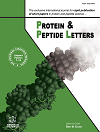
Full text loading...

Diabetic hyperglycemia is often associated with elevated levels of trimethylamine-N-oxide (TMAO), a gut microbiota-derived metabolite that was recently identified as a risk factor for cardiovascular diseases. The combined presence of hyperglycemia and TMAO can aggravate cardiac dysfunction in diabetic patients. This study aimed to evaluate the protective effects of the methanolic extract of Syzygium aromaticum against the toxic effects induced by TMAO and hyperglycemia in cultured rat cardiomyocytes.
Rat cardiomyocytes, H9C2 were exposed to high glucose and TMAO, individually and in combination to simulate diabetic and dysbiotic stress conditions. Cells were treated with optimized doses of Syzygium aromaticum extract under dual-stress conditions. Cellular and nuclear morphology were assessed microscopically. Oxidative stress markers were evaluated. Proteomic profiling using liquid chromatography-mass spectrometry (LC-MS) was conducted to identify differentially expressed proteins. Crucial targets were identified and functionally annotated using integrated bioinformatics tools and databases. Expression of the critical transcription factor Yin-Yang-1 (YY1) was analysed using quantitative PCR (qPCR).
Dual exposure to TMAO and hyperglycemia resulted in greater morphological and oxidative damage compared to exposure to either individual stressor alone. Treatment with Syzygium aromaticum extract significantly reduced cellular and nuclear damage as well as oxidative stress under dual-stress conditions. Proteomic analysis revealed several differentially expressed proteins, with YY1 identified as a key regulatory factor. qPCR confirmed the suppression of YY1 expression by Syzygium aromaticum treatment.
Our findings suggest that Syzygium aromaticum mitigates cardiomyocyte injury caused by metabolic and microbial stress. Its protective effect may be mediated through antioxidant activity and transcriptional regulation, particularly via the downregulation of YY1, a key player in cardiac stress responses.
Syzygium aromaticum exhibits multifaceted cardioprotective and prebiotic potential by mitigating TMAO and hyperglycemia-induced toxicity, highlighting its therapeutic promise in managing gut dysbiosis linked to diabetic cardiomyopathy.